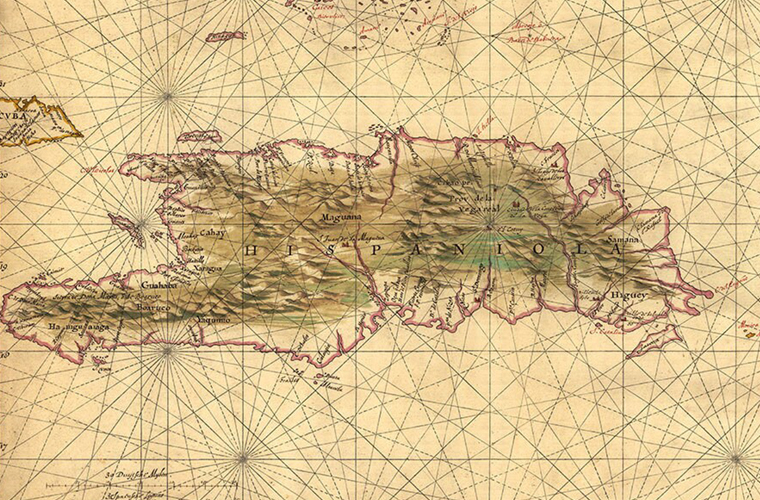Hispaniola is an island located in the Caribbean region of the Greater Antilles. It is the second-largest island in the Caribbean, after Cuba, and is shared by two countries: the Dominican Republic and Haiti. The Dominican Republic occupies the eastern two-thirds of Hispaniola, while Haiti occupies the western third. The two countries have distinct cultures, languages, and histories. The Dominican Republic is primarily Spanish-speaking and has a population of around 11 million people. Its capital is Santo Domingo, which is also the oldest continuously inhabited European settlement in the Americas. Haiti, on the other hand, is primarily French and Creole-speaking, with a population of around 11 million people. Its capital is Port-au-Prince.
Hispaniola has a rich and complex history. It was the first island discovered by Christopher Columbus during his voyages in 1492, marking the beginning of European colonization in the Americas. The Spanish settled in the eastern part of the island, while the French established a presence in the western part. The island was characterized by a history of colonial rule, slavery, and struggles for independence. The geography of Hispaniola is diverse and includes mountain ranges, fertile valleys, and stunning coastlines. The highest peak in the Caribbean, Pico Duarte, is located in the Dominican Republic. The island also features beautiful beaches, lush rainforests, and picturesque landscapes.
Tourism is a significant industry for both the Dominican Republic and Haiti. The Dominican Republic is known for its luxurious resorts, golf courses, and white sandy beaches, particularly in popular tourist areas like Punta Cana and Puerto Plata. Haiti, despite facing challenges, has its own unique attractions, including historical sites such as the Citadelle Laferrière and beautiful natural areas like the Bassin Bleu waterfalls.
The culture of Hispaniola is diverse and influenced by African, European, and indigenous Taino traditions. Music, dance, and art play important roles in the cultural expression of both countries. Merengue and bachata are popular music genres in the Dominican Republic, while Haiti is known for its vibrant compass music and Vodou traditions.
In summary, Hispaniola is a historically and culturally significant island in the Caribbean. It is shared by the Dominican Republic and Haiti, each offering its own distinct experiences, landscapes, and cultural heritage to visitors. From stunning beaches to the rich history and vibrant music, Hispaniola is a destination that showcases the diversity and beauty of the Caribbean.

